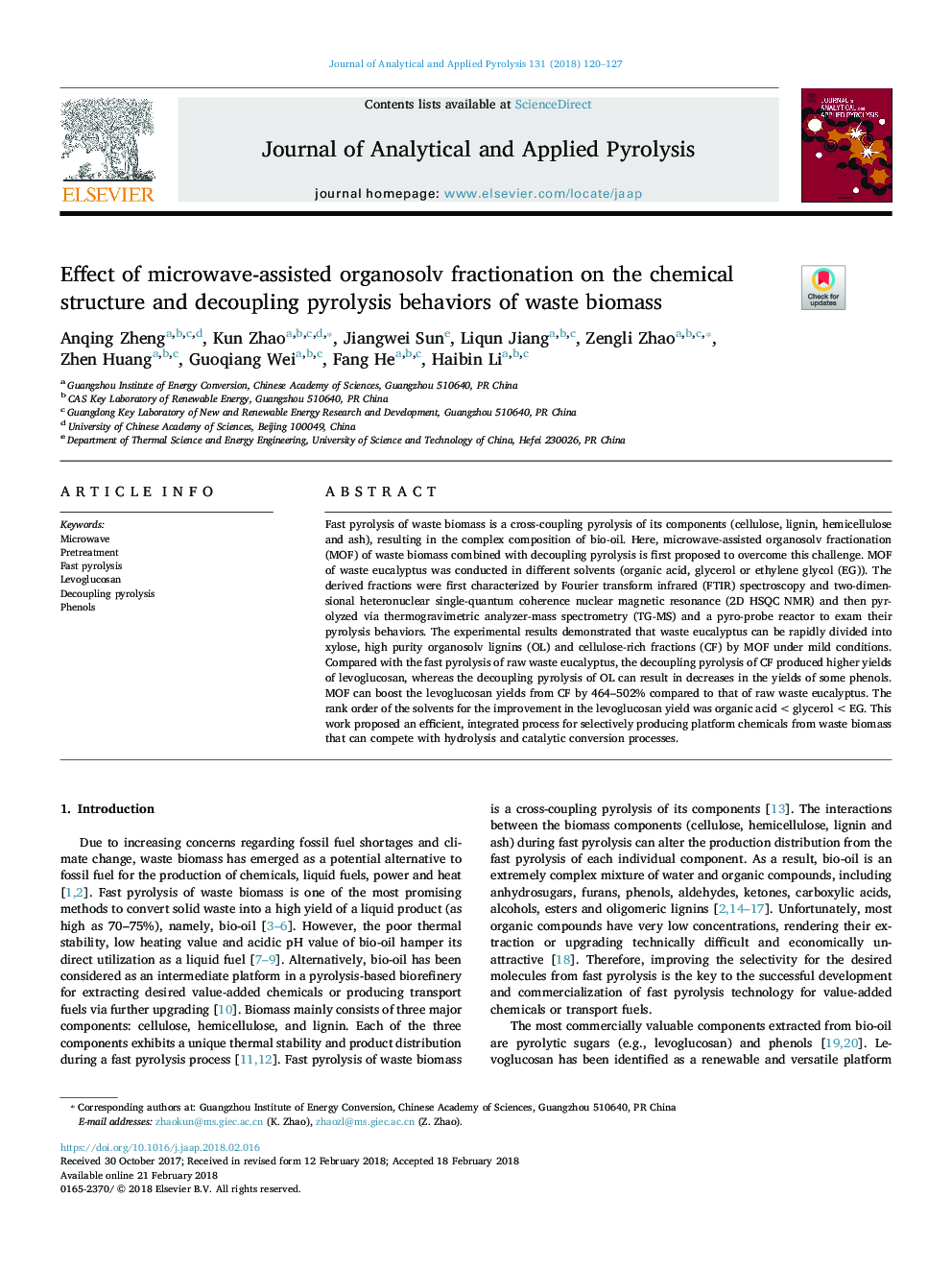| Article ID | Journal | Published Year | Pages | File Type |
|---|---|---|---|---|
| 7606361 | Journal of Analytical and Applied Pyrolysis | 2018 | 8 Pages |
Abstract
Fast pyrolysis of waste biomass is a cross-coupling pyrolysis of its components (cellulose, lignin, hemicellulose and ash), resulting in the complex composition of bio-oil. Here, microwave-assisted organosolv fractionation (MOF) of waste biomass combined with decoupling pyrolysis is first proposed to overcome this challenge. MOF of waste eucalyptus was conducted in different solvents (organic acid, glycerol or ethylene glycol (EG)). The derived fractions were first characterized by Fourier transform infrared (FTIR) spectroscopy and two-dimensional heteronuclear single-quantum coherence nuclear magnetic resonance (2D HSQC NMR) and then pyrolyzed via thermogravimetric analyzer-mass spectrometry (TG-MS) and a pyro-probe reactor to exam their pyrolysis behaviors. The experimental results demonstrated that waste eucalyptus can be rapidly divided into xylose, high purity organosolv lignins (OL) and cellulose-rich fractions (CF) by MOF under mild conditions. Compared with the fast pyrolysis of raw waste eucalyptus, the decoupling pyrolysis of CF produced higher yields of levoglucosan, whereas the decoupling pyrolysis of OL can result in decreases in the yields of some phenols. MOF can boost the levoglucosan yields from CF by 464-502% compared to that of raw waste eucalyptus. The rank order of the solvents for the improvement in the levoglucosan yield was organic acid < glycerol < EG. This work proposed an efficient, integrated process for selectively producing platform chemicals from waste biomass that can compete with hydrolysis and catalytic conversion processes.
Related Topics
Physical Sciences and Engineering
Chemistry
Analytical Chemistry
Authors
Anqing Zheng, Kun Zhao, Jiangwei Sun, Liqun Jiang, Zengli Zhao, Zhen Huang, Guoqiang Wei, Fang He, Haibin Li,
